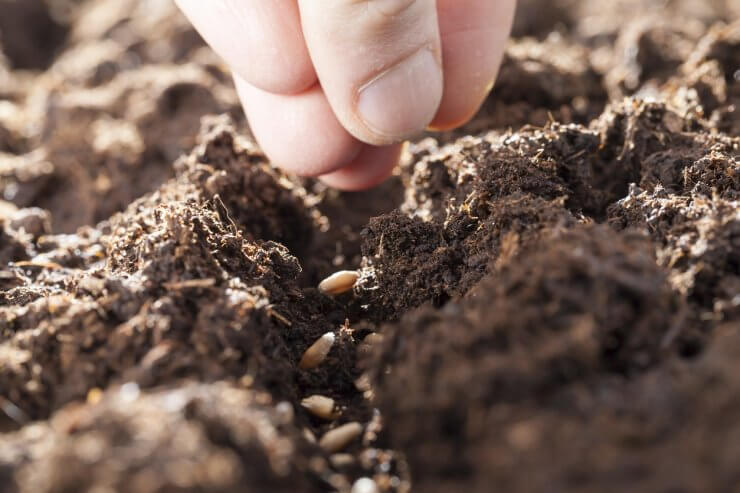
So you’re growing wheat. Maybe you’re a homesteader living your best Little House on the Prairie fantasy, or perhaps you’re a small-scale farmer who got tired of explaining to relatives that yes, regular humans can actually grow wheat. Either way, you’ve probably noticed that wheat has opinions about its neighbors–and those opinions can make the difference between a bumper crop and a botanical disappointment.
Welcome to the surprisingly dramatic world of wheat companion planting, where your grain has frenemies, sworn enemies, and ride-or-die besties that could legitimately transform your harvest. Think of it as botanical matchmaking, except instead of swiping right, you’re strategically placing plants based on 10,000 years of agricultural gossip and some genuinely wild biochemistry.
Spoiler alert: This gets nerdy. But the fun kind of nerdy where you’ll learn that some plants are basically free fertilizer factories, others are chemical warfare specialists, and a few are straight-up crop imposters engaged in agricultural identity theft.

Wheat’s Dream Team
Legumes: The Nitrogen-Fixing Wingmen
Clover, peas, and vetch are basically wheat’s best friends who also happen to be incredible chemists. Here’s the nerdy bit that’ll blow your mind: these legumes have a symbiotic relationship with Rhizobium bacteria living in their root nodules. These microscopic heroes literally pull nitrogen from the air and convert it into plant-available forms. It’s like having a friend who’s also a free fertilizer factory!
When you plant wheat after legumes in rotation, you’re basically rolling out the nitrogen-enriched red carpet. Wheat is a heavy nitrogen feeder (aren’t we all?), and legumes leave the soil 50–150 pounds richer in nitrogen per acre. That’s not just good gardening–that’s friendship goals.
Brassicas: The Pest-Confusing Cousins
Radishes, turnips, and mustards are wheat’s slightly chaotic relatives who show up to parties and accidentally make everything better. These plants produce glucosinolates–fancy sulfur compounds that break down into biofumigants. Translation? They’re natural pest repellents that confuse the heck out of wheat’s enemies.
The daikon radish deserves special mention here. This deep-rooted overachiever breaks up soil compaction like a subterranean jackhammer, creating channels that wheat roots will thank you for later. It’s soil therapy without the co-pay.
Proceed With Caution
Sunflowers: The Gorgeous Backstabbers
Sunflowers are that Instagram-perfect friend who secretly makes you feel inadequate. They’re allelopathic, meaning they release chemicals (specifically, chlorogenic acid and heliannuols) that inhibit nearby plants’ growth. Wheat planted too close to sunflowers is like you trying to shine at a party where Beyoncé just showed up–technically possible, but statistically unlikely.
Keep them at least 20 feet apart, or better yet, plant sunflowers after wheat harvest as a follow-up crop.

Agricultural Arch-Nemeses
Wild Oats: The Identity-Theft Criminals
Wild oats (Avena fatua) are wheat’s worst nightmare–they look similar enough to wheat when young that they can infiltrate your field like crop imposters. But here’s the kicker: they’re allelopathic bullies who release phenolic compounds that suppress wheat germination and growth. They’re also aggressive nutrient competitors who’ll steal wheat’s lunch money (nitrogen, phosphorus, potassium–the whole nutritional piggy bank).
Quackgrass: The Invasive Roommate From Hell
If wild oats are identity thieves, quackgrass (Elymus repens) is that roommate who never leaves and gradually takes over your entire apartment. This perennial nightmare spreads through rhizomes–underground stems that can regenerate from even tiny fragments. One plant can produce 25 feet of rhizomes in a single season. It’s basically the horror movie villain of the wheat field, and it’s allelopathic to boot.

The Crop Rotation Plot Twist
Here’s where things get juicy. The shocking secret that could transform your harvest isn’t just about what grows next to wheat–it’s about what grows instead of wheat on a rotating schedule.
The Three-Year Rule
Never–and I mean never–plant wheat in the same spot two years running. Disease organisms and pests are like that ex who keeps showing up: they need time to give up and move on. Wheat-specific fungi like Fusarium and wheat stem sawfly larvae overwinter in crop residue, just waiting for you to serve up another wheat buffet.
The Gold Standard Rotation: Wheat → Legume → Broadleaf → Wheat
This is the agricultural equivalent of eating a balanced diet. Year one: wheat depletes nitrogen. Year two: legumes replenish it. Year three: a broadleaf crop (like canola or sunflowers–yes, now they’re useful!) with different nutritional needs and pest profiles breaks disease cycles. Then back to wheat with a clean slate.
Cover Cropping Between Seasons
Want to level up? Plant a quick cover crop of hairy vetch or crimson clover between wheat harvests. They suppress weeds, prevent erosion, add nitrogen, and attract beneficial insects. It’s like giving your soil a spa day between marathon training sessions.
Wheat companion planting isn’t just hippie-dippie garden mysticism–it’s sophisticated biological warfare against pests, strategic soil management, and a 10,000-year-old agricultural tradition backed by actual science. Your wheat doesn’t just want good neighbors; it needs them to reach its full potential.
So next time someone at the farmers market asks about your growing secrets, smile knowingly. You’ve got the companion planting intel that separates wheat amateurs from grain-growing legends.
Now go forth and create the ultimate agricultural buddy system! With our Wheat Growing Guide, you get all the details that go into raising wholesome, fiber-rich wheat of your own.


 Previous
Previous

